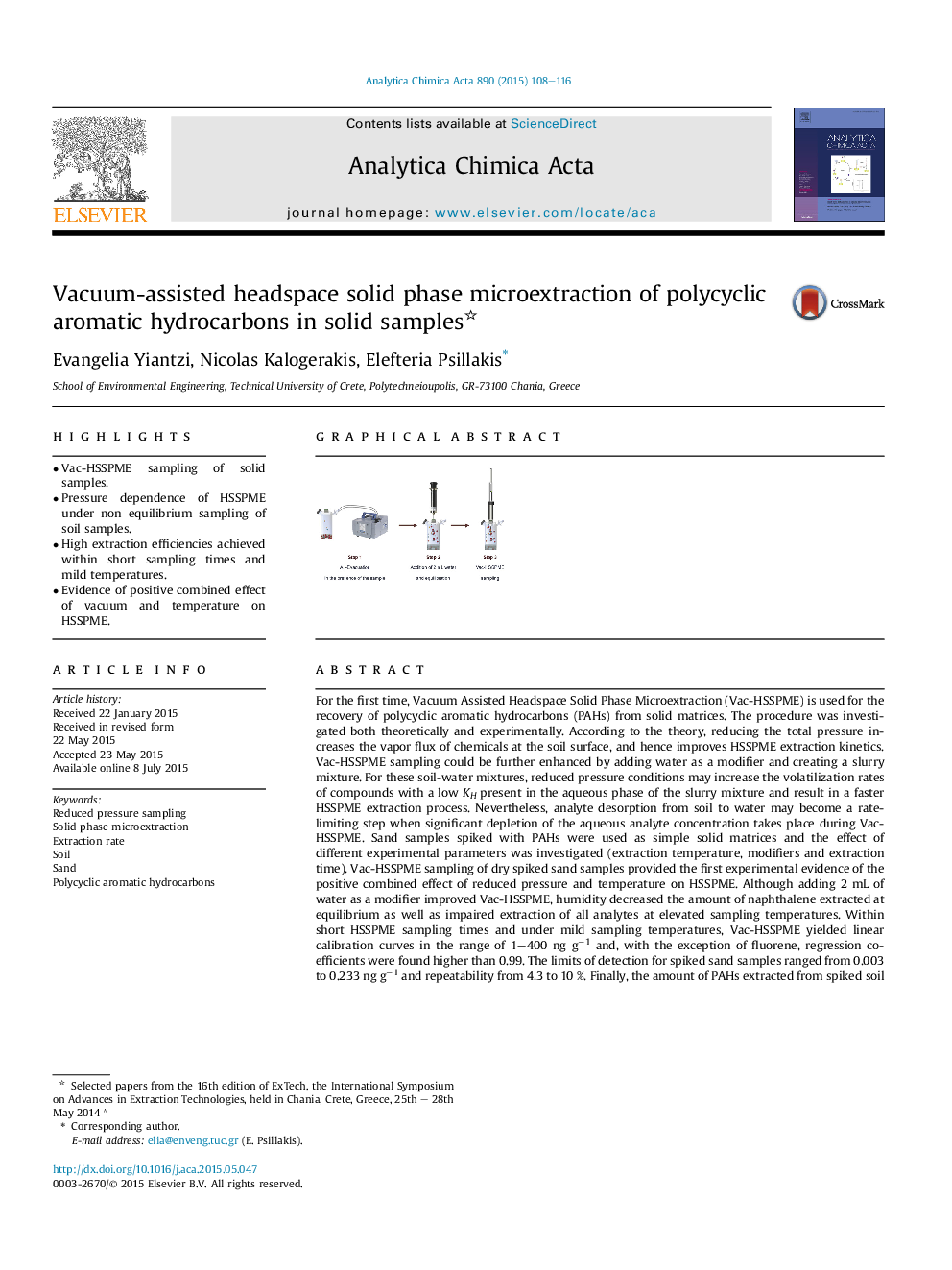| کد مقاله | کد نشریه | سال انتشار | مقاله انگلیسی | نسخه تمام متن |
|---|---|---|---|---|
| 1163487 | 1490942 | 2015 | 9 صفحه PDF | دانلود رایگان |
• Vac-HSSPME sampling of solid samples.
• Pressure dependence of HSSPME under non equilibrium sampling of soil samples.
• High extraction efficiencies achieved within short sampling times and mild temperatures.
• Evidence of positive combined effect of vacuum and temperature on HSSPME.
For the first time, Vacuum Assisted Headspace Solid Phase Microextraction (Vac-HSSPME) is used for the recovery of polycyclic aromatic hydrocarbons (PAHs) from solid matrices. The procedure was investigated both theoretically and experimentally. According to the theory, reducing the total pressure increases the vapor flux of chemicals at the soil surface, and hence improves HSSPME extraction kinetics. Vac-HSSPME sampling could be further enhanced by adding water as a modifier and creating a slurry mixture. For these soil-water mixtures, reduced pressure conditions may increase the volatilization rates of compounds with a low KH present in the aqueous phase of the slurry mixture and result in a faster HSSPME extraction process. Nevertheless, analyte desorption from soil to water may become a rate-limiting step when significant depletion of the aqueous analyte concentration takes place during Vac-HSSPME. Sand samples spiked with PAHs were used as simple solid matrices and the effect of different experimental parameters was investigated (extraction temperature, modifiers and extraction time). Vac-HSSPME sampling of dry spiked sand samples provided the first experimental evidence of the positive combined effect of reduced pressure and temperature on HSSPME. Although adding 2 mL of water as a modifier improved Vac-HSSPME, humidity decreased the amount of naphthalene extracted at equilibrium as well as impaired extraction of all analytes at elevated sampling temperatures. Within short HSSPME sampling times and under mild sampling temperatures, Vac-HSSPME yielded linear calibration curves in the range of 1–400 ng g−1 and, with the exception of fluorene, regression coefficients were found higher than 0.99. The limits of detection for spiked sand samples ranged from 0.003 to 0.233 ng g−1 and repeatability from 4.3 to 10 %. Finally, the amount of PAHs extracted from spiked soil samples was smaller compared to spiked sand samples, confirming that soil could bind target analytes more strongly and thus decrease the readily available fraction of target analytes.
Figure optionsDownload as PowerPoint slide
Journal: Analytica Chimica Acta - Volume 890, 26 August 2015, Pages 108–116
